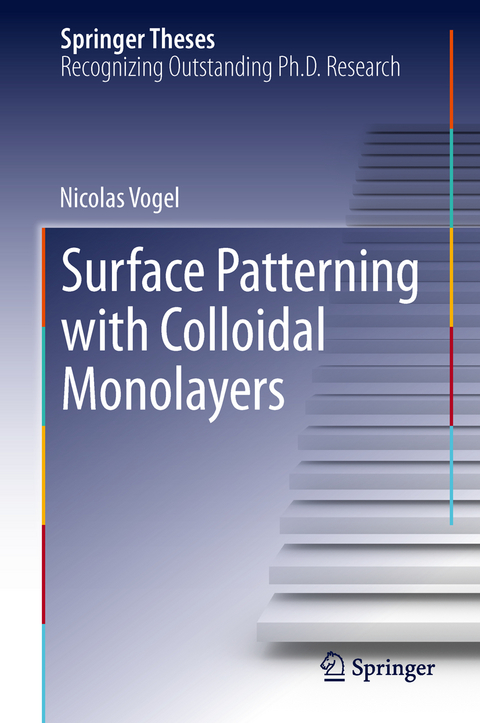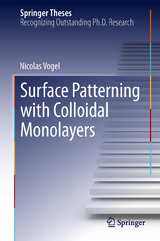Surface Patterning with Colloidal Monolayers
Seiten
2012
|
2012
Springer Berlin (Verlag)
978-3-642-35132-7 (ISBN)
Springer Berlin (Verlag)
978-3-642-35132-7 (ISBN)
This book details a method used to embed nanoparticle arrays into the substrate, which is developed and used to design robust, re-usable biosensor platforms and nanoscale patterns of biomimetic lipid bilayer membranes.
How can the two dimensional crystallization of colloids be used to form highly ordered colloidal monolayers on solid substrates? What application does this have in generating arrays of nanostructures? These questions are addressed in Nicolas Vogel's thesis. Vogel describes a simple preparation method for the formation of uniform colloidal crystals over large areas, which he refines to yield more complex binary and non-close-packed arrangements. These monolayers can be applied to a process termed colloidal lithography which is used to prepare high quality metallic nanostructures with tailored properties defined to suit a variety of applications. Moreover, the author describes a method used to create metallic nanodot arrays with a resolution unprecedented for colloidal lithography methods. The author also outlines methodology to embed nanoparticle arrays into the substrate, which is developed and used to design robust, re-usable biosensor platforms and nanoscale patterns of biomimetic lipid bilayer membranes. The research in this thesis has led to a large number of publications in internationally renowned journals.
How can the two dimensional crystallization of colloids be used to form highly ordered colloidal monolayers on solid substrates? What application does this have in generating arrays of nanostructures? These questions are addressed in Nicolas Vogel's thesis. Vogel describes a simple preparation method for the formation of uniform colloidal crystals over large areas, which he refines to yield more complex binary and non-close-packed arrangements. These monolayers can be applied to a process termed colloidal lithography which is used to prepare high quality metallic nanostructures with tailored properties defined to suit a variety of applications. Moreover, the author describes a method used to create metallic nanodot arrays with a resolution unprecedented for colloidal lithography methods. The author also outlines methodology to embed nanoparticle arrays into the substrate, which is developed and used to design robust, re-usable biosensor platforms and nanoscale patterns of biomimetic lipid bilayer membranes. The research in this thesis has led to a large number of publications in internationally renowned journals.
Introduction.- Motivation and Outline.- Theory.- Characterization Methods.- Results and Discussion.- Experimental Section.- Summary and Outlook.
| Erscheint lt. Verlag | 22.12.2012 |
|---|---|
| Reihe/Serie | Springer Theses |
| Zusatzinfo | XVI, 236 p. |
| Verlagsort | Berlin |
| Sprache | englisch |
| Maße | 155 x 235 mm |
| Gewicht | 515 g |
| Themenwelt | Naturwissenschaften ► Chemie ► Organische Chemie |
| Technik ► Maschinenbau | |
| Schlagworte | Colloidal Crystallization • Colloidal Lithography • Colloidal Monolayers • Emulsion Polymerization • Kolloid • Miniemulsion Polymerization • Oberfläche • plasmonic nanostructures • Self-Assembly • Simple Nanotechnology |
| ISBN-10 | 3-642-35132-8 / 3642351328 |
| ISBN-13 | 978-3-642-35132-7 / 9783642351327 |
| Zustand | Neuware |
| Haben Sie eine Frage zum Produkt? |
Mehr entdecken
aus dem Bereich
aus dem Bereich




